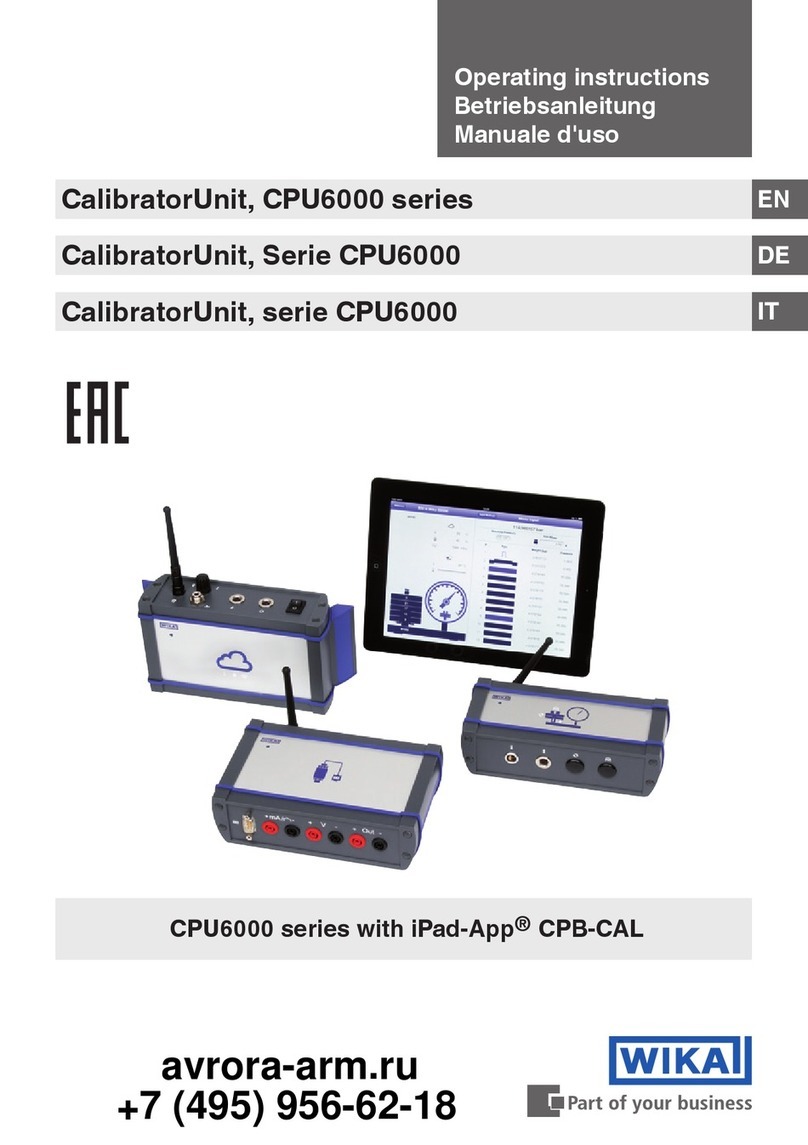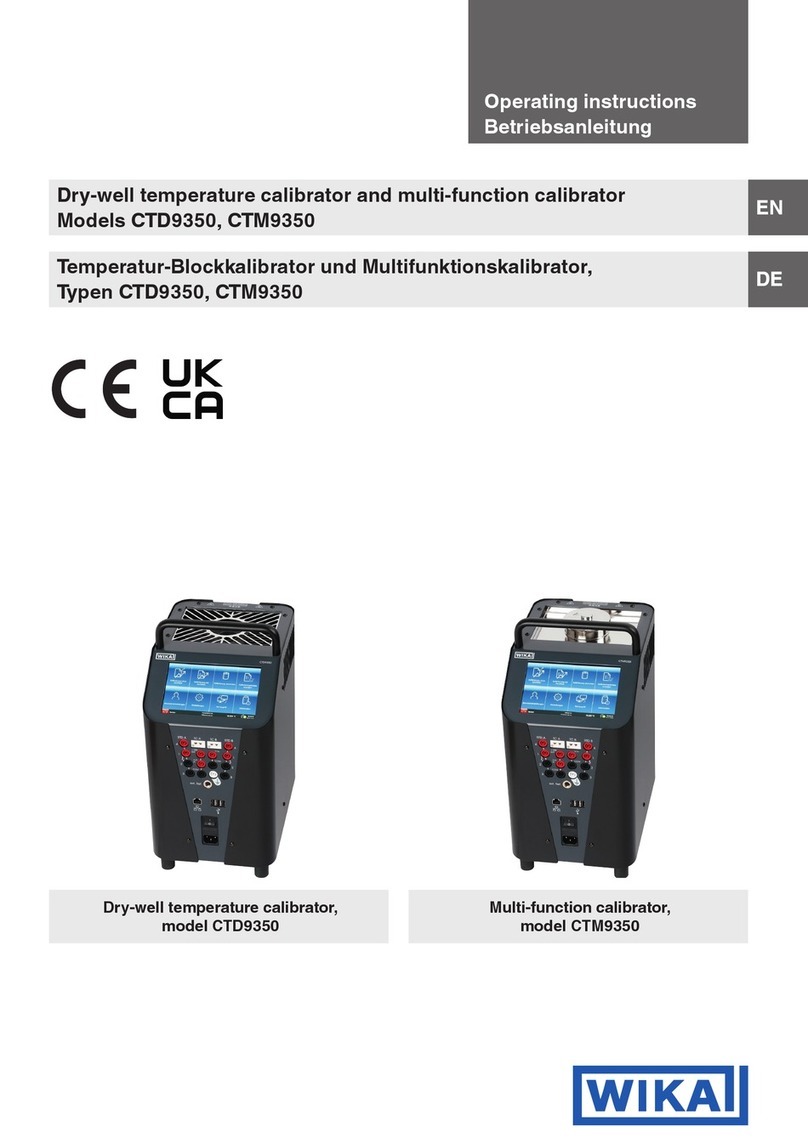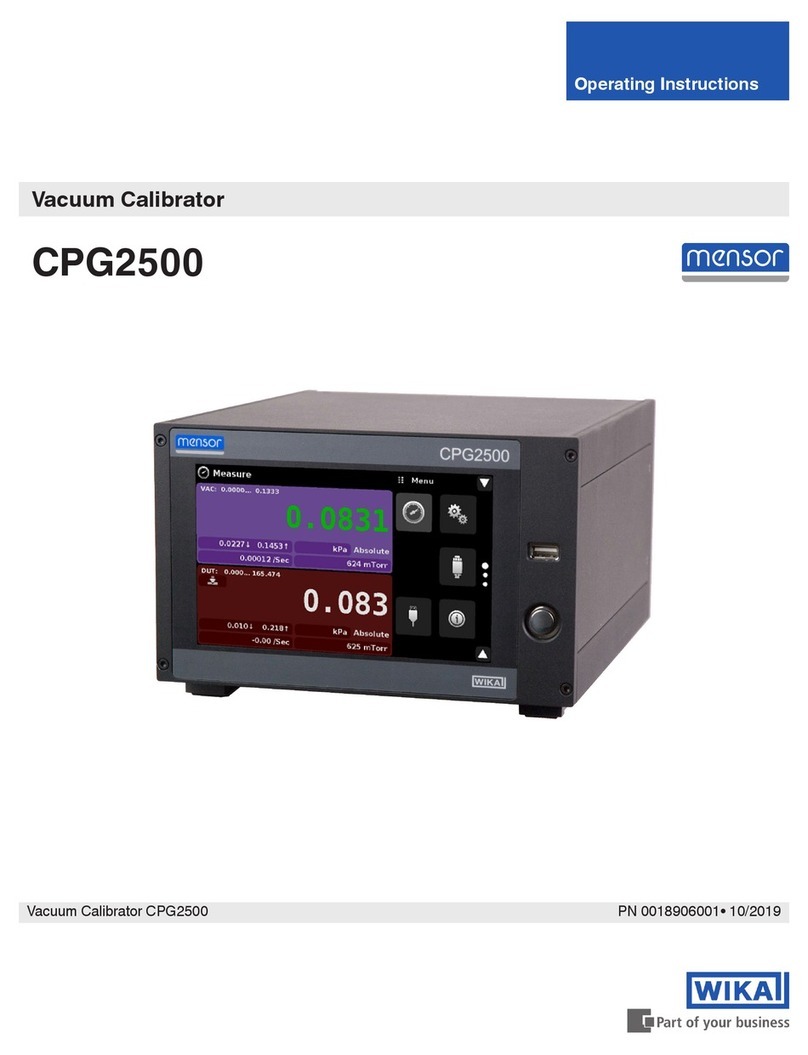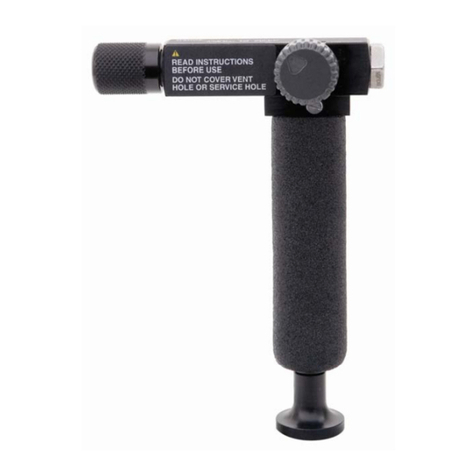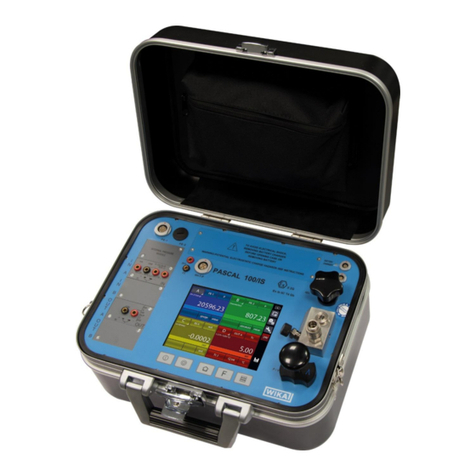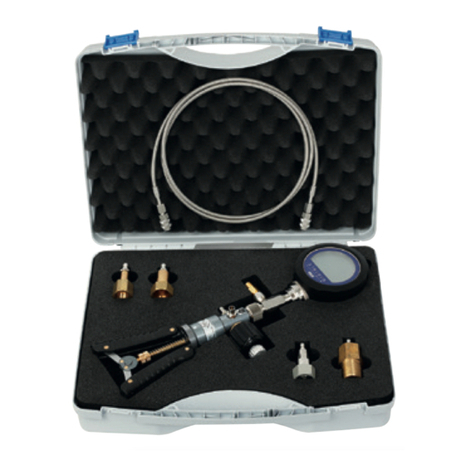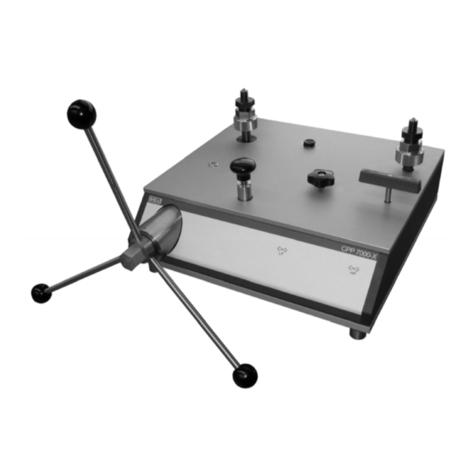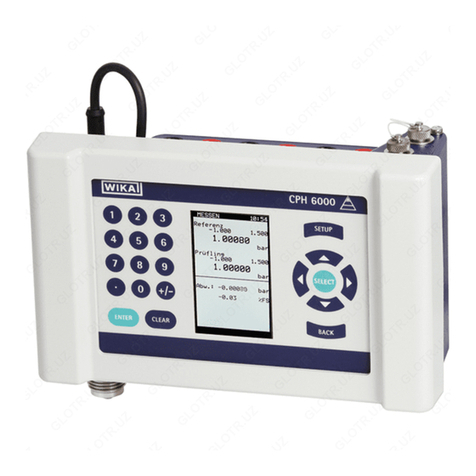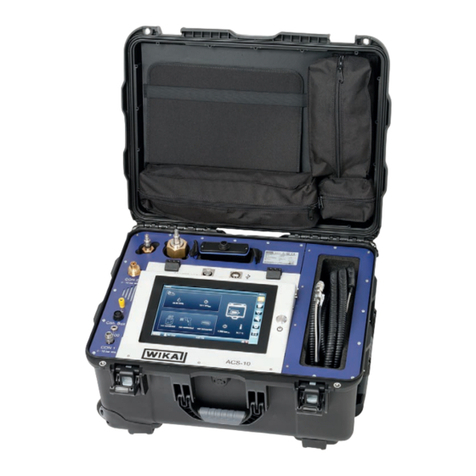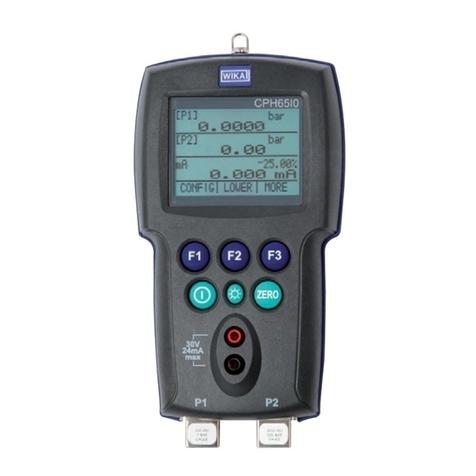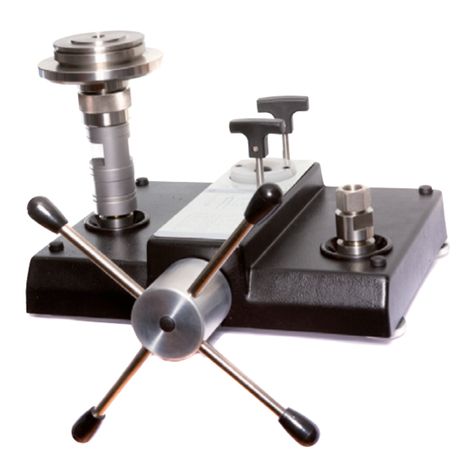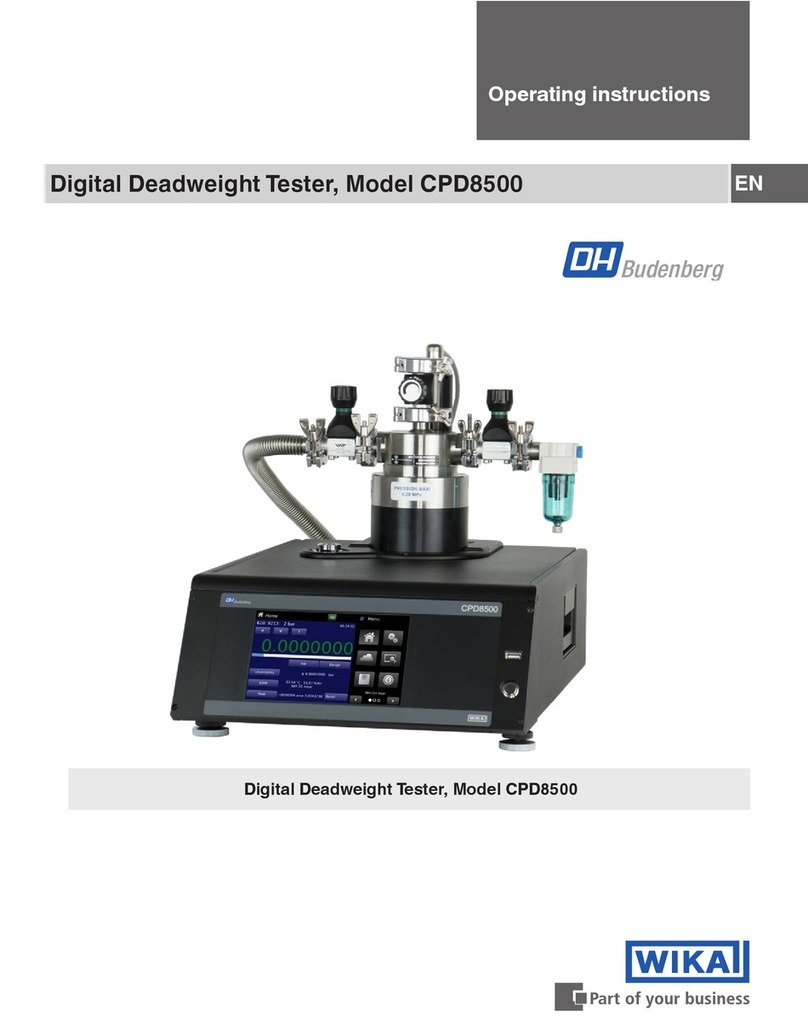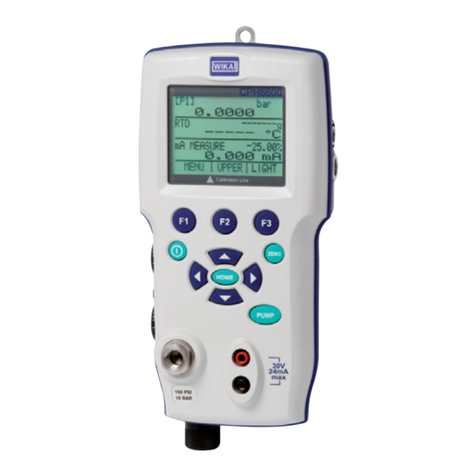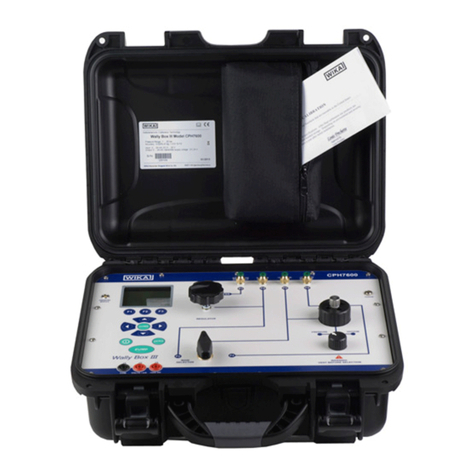
10 WIKA operating instructions, pressure calibrator model CPH6000
EN
11069023.05 01/2023 EN/DE
3. Safety
Reference pressure sensors
■Always operate the reference pressure sensors within the overpressure limit.
■Reference pressure sensors should only be mounted or dismounted when the system is free from pressure.
■Only use model CPT6000 reference pressure sensors! Using other sensors could damage both the pressure calibrator and/
or the reference pressure sensor.
■If the reference pressure sensor is used in applications with oil as a pressure medium, make sure it is not be used with
flammable material or gases directly afterwards, since this can lead to dangerous explosions and a risk to personnel and
machinery.
Test leads and test probes
■Only use the test cable set available from WIKA for the pressure calibrator. Do not connect any cable over 3 m [9.84 in] long
to the CPH6000.
■Plan the wiring especially carefully when connecting to other devices. Under certain circumstances, internal connections in
third-party devices (e.g. GND connected to the ground) can lead to impermissible voltages that could compromise or even
destroy the function of the device itself or a device connected to it.
■Make sure that the test probes never contact a voltage source while the test cables are connected to the current terminals.
■Inspect the test leads for damaged insulation or exposed metal. Check the continuity of the leads. Damaged test leads
should be replaced before using the instrument.
■When using test probes keep fingers away from the test probe contacts. Keep your fingers behind the test probes' finger
guards.
■First connect the neutral conductor, and then the live lead.When disconnecting, remove the test leads first.
■Disconnect test leads before changing to another measurement or source function.
Measuring mode
■There must be no external pressure acting on the CPH6000.
■Only use dry, clean air as a medium for the CPH6000 and CPT6000.
■Select the proper function and correct measuring range for the measurement.
■Always operate the reference pressure sensors within the defined pressure range.
■Should a failure occur, aggressive media under high pressure or vacuum may be present at the reference pressure sensors.
■The measuring signal of the reference (or test item) can be influenced by large electromagnetic effects and the display of
the signal may be lost completely.
Any use beyond or different to the intended use is considered as improper use.
3.4 Responsibility of the operator
The instrument is used in the industrial sector. The operator is therefore responsible for legal obligations regarding safety at
work.
The safety instructions within these operating instructions, as well as the safety, accident prevention and environmental
protection regulations for the application area must be maintained.
3.5 Personnel qualification
WARNING!
Risk of injury should qualification be insufficient
Improper handling can result in considerable injury and damage to property.
▶The activities described in these operating instructions may only be carried out by skilled personnel who have
the qualifications described below.
Skilled personnel
Skilled personnel, authorised by the operator, are understood to be personnel who, based on their technical training,
knowledge of measurement and control technology and on their experience and knowledge of country-specific regulations,
current standards and directives, are capable of carrying out the work described and independently recognising potential
hazards.
Special operating conditions require further appropriate knowledge, e.g. of aggressive media.
